Lucille Ball: Scripts, Cue Cards, and Teleprompters
As a film star, Lucille Ball only had to memorize dialogue in short, bite-sized chunks. On radio, Lucille and her cast-mates read from scripts. But on television, in a realistic situation comedy, Ball needed to memorize a full thirty minute script a week!
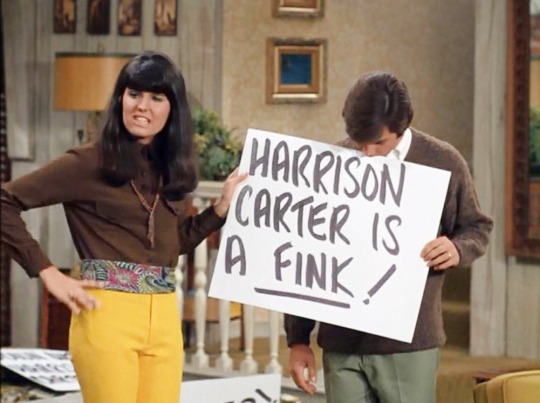
“Lucy Goes on Strike” (1969)
CUE CARDS & PROMPTERS & SCRIPT SLIPS!
Credit for developing the cue card (sometimes derisively called ‘idiot cards’) is genereally given to John Barrymore, who had them tucked in out-of-the-way places during his stage performances in the 1930s.

Ed Wynn placed cue cards in the orchestra pit when he worked in vaudeville, then brought the practice to television with “The Ed Wynn Show” (1949-50), on which Lucille Ball got her first taste of the new medium, and was introduced to the concept of cue cards.
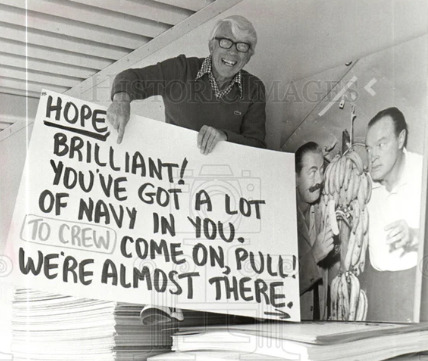
Wynn’s cards were prepared by Barney McNulty (1923-2000), known as the ‘King of Cue Cards’. He went on to form a company named Ad-Libs, a cue card company whose clients included many early TV stars, including Lucille Ball. McNulty later praised Ball for her cue card savvy:
“Hardly anyone realizes that the madcap redhead has cue cards on the set!”
McNulty claimed to have flipped cards for the “I Love Lucy” pilot episode. But “I Love Lucy” was quite different from shows starring Milton Berle, Ed Wynn, and Bob Hope, who did not use the convention of the fourth wall. Ball and her cast were performing a realistic teleplay that required them to make eye contact with their fellow actors, not look to cue cards. For this reason, cue cards were virtually unknown during “I Love Lucy.” Of course, there were exceptions…

For her Vitameatavegamin spiel in “Lucy Does A TV Commercial” (1952) every slurred word and syllable was written in the script. To be letter perfect, and just to be on the safe side, Ball had cue cards set up in case she forgot her lines. Performing physical comedy in front of a live audience gets less laughs after the first take. Plus, re-takes were time consuming and expensive. It was hardly necessary. Lucy didn’t miss a beat and nailed it in one take.

On December 14, 1953, Lucille Ball and Desi Arnaz were the first to use a new teleprompting system developed by their producer, Jess Oppenheimer, although it was not the first in-camera system. Fred Barton had developed one as early as early as 1948. A forerunner to the modern video teleprompter, Oppenheimer’s “through the roll system” was later granted a US patent.

Lucy and Desi did not use it for the main show, which that night was “Lucy Has Her Eyes Examined”. Oppenheimer did not like that it obstructed the view of the live audience, but it was used for the Philip Morris commercials, which were filmed without an audience. The sponsors wanted their message clearly communicated, so it was important that the script be delivered verbatim. With the memorization of a weekly script, Lucy and Desi did not need the burdon of also memorizing commercial copy.

In “Lucy’s Mother-in-Law” (1954) the Ricardo closet door is wide open and it looks like there is a cardboard box of used cue cards stored in there! Even if they weren’t used on “I Love Lucy,” they might have been scared up from the Desilu prop room to “dress” the closet.

Bob Hope was notorious for his regular use of cue cards. When he guest-starred as himself on “I Love Lucy” in 1956, he read his lines from cue cards. It was prop man Jerry Miggins who was in charge of holding them for Hope.
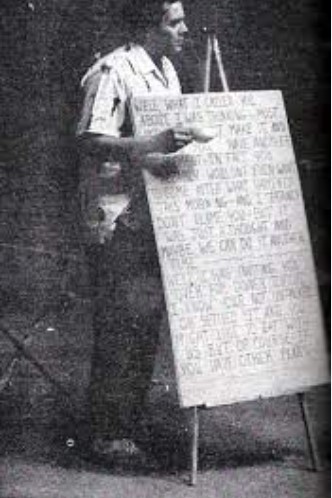
When “I Love Lucy” morphed into its hour-long format, cue cards were sometimes used, especially when the tensions of a failing marriage and running Desilu took Lucy and Desi’s time away from script memorization and busy guest stars did not have the time for extensive rehearsals. The above photo was taken during rehearsals for “The Star Next Door” (1957).

When Lucy launched “The Lucy Show” in 1962, she was also trying to run Desilu. Along with her adminsitrative duties, she still had to find time to learn a 30-minute script every week. She was also a newleywed and mother of two children, so time was precious.

Tony Mendez, who famously flipped cards for David Letterman and often appeared on camera as well, was interviewed by New York Magazine in 2001 and recalled how he got started in the business:
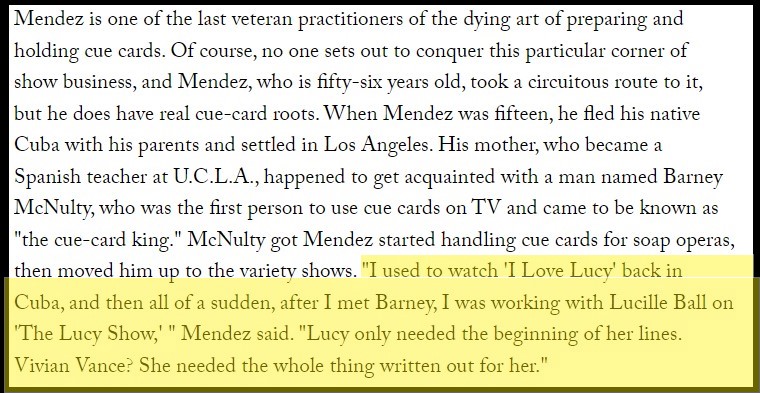
It seems that Lucille Ball was not the only one relying on cue cards. According to Mendez, Lucy merely needed a prompt, but Vivian needed the entire line!
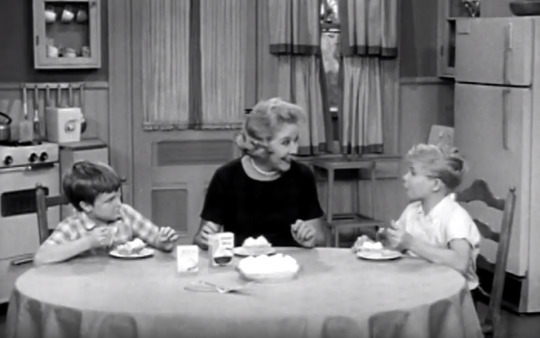
In fact, the DVD extras for “The Lucy Show: Season One” include footage of Vivian using cue dards to do the show’s in-character commercials. They are positioned just behind Ralph Hart’s head!

Lucy was was still adamant that her cast try and memorize their lines. When Charles Lane (banker Barndsdahl) stumbled over his dialogue, impatient Lucy used this as a reason to replace him. In reality, this may have been just the “forpublication” story of what was actually Ball’s long-held desire to cast Gale Gordon. When the series began, Gordon was under contract to “Dennis the Menace” and couldn’t commit to Lucy. As soon as he became available, however, Lucy was not about to het him get away again – even if it meant dismissing Lane.
By “Here’s Lucy” – Ball’s third sitcom – she was using cue cards more often than not – espeically if the episode demanded a lot of rehearsal of music and dance.
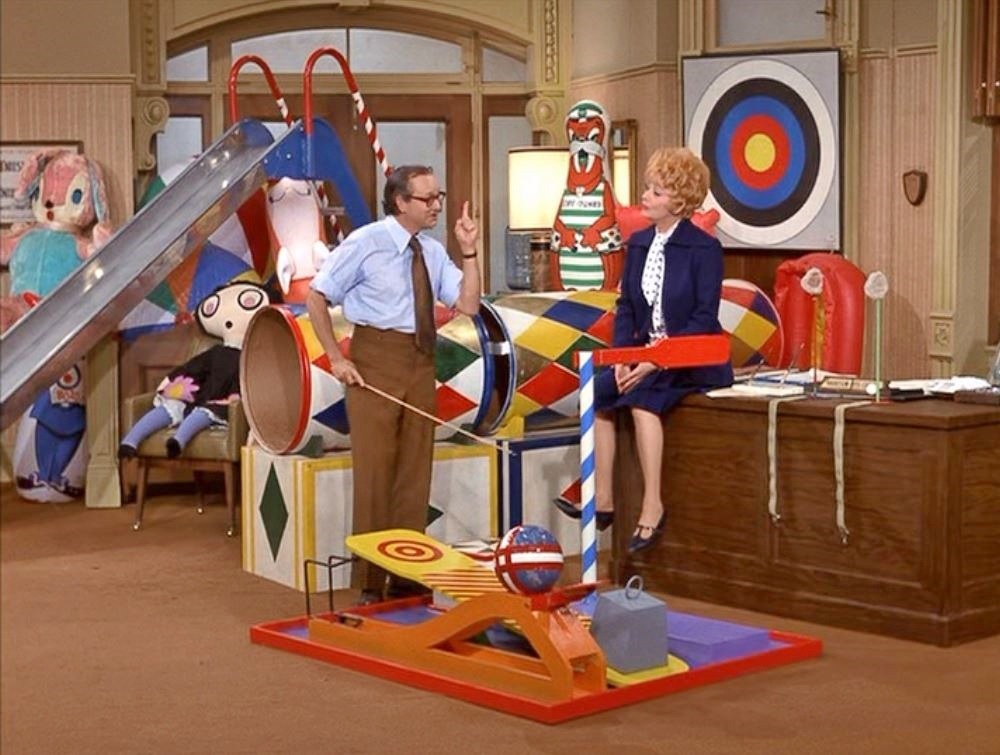
Tommy Tucker was the name of the “Here’s Lucy” cue card coordinator. Tucker and Lucy enjoyed playing word games together during lulls in shooting. As a tribute to him, the toy vendor played by Wally Cox in “Lucy Sublets the Office” (1972) was named Tommy Tucker. Tucker was interviewed for the short film “Lucy Meets The Burtons: A Comic Gem” which is included on the “Here’s Lucy: Season 3″ DVD.

Coincidentally, one of the guest actors in this episode was Richard Deacon. His eyes can frequently be seen looking at the cue cards.

Another guest actor who’s eyes were usually seraching for the cue cards is Lyle Talbot, who played Harry’s lawyer in “Lucy Takes Over” (1970).
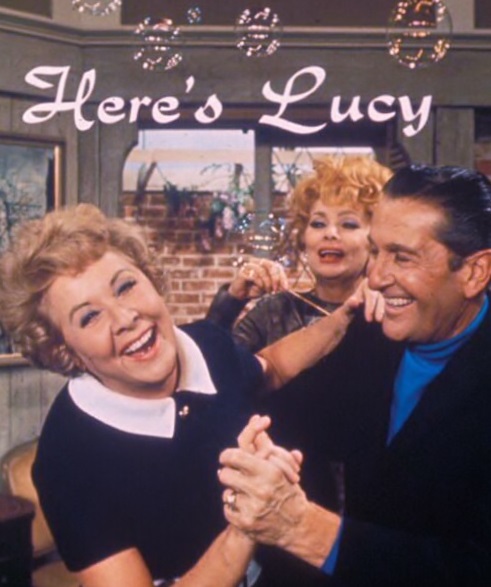
Not being an actor, Lawrence Welk’s eyes often distractingly glance over at the cue cards for his lines during his appearance on “Here’s Lucy” (1970). He smiles at his own jokes, and anticipates rather than reacts.
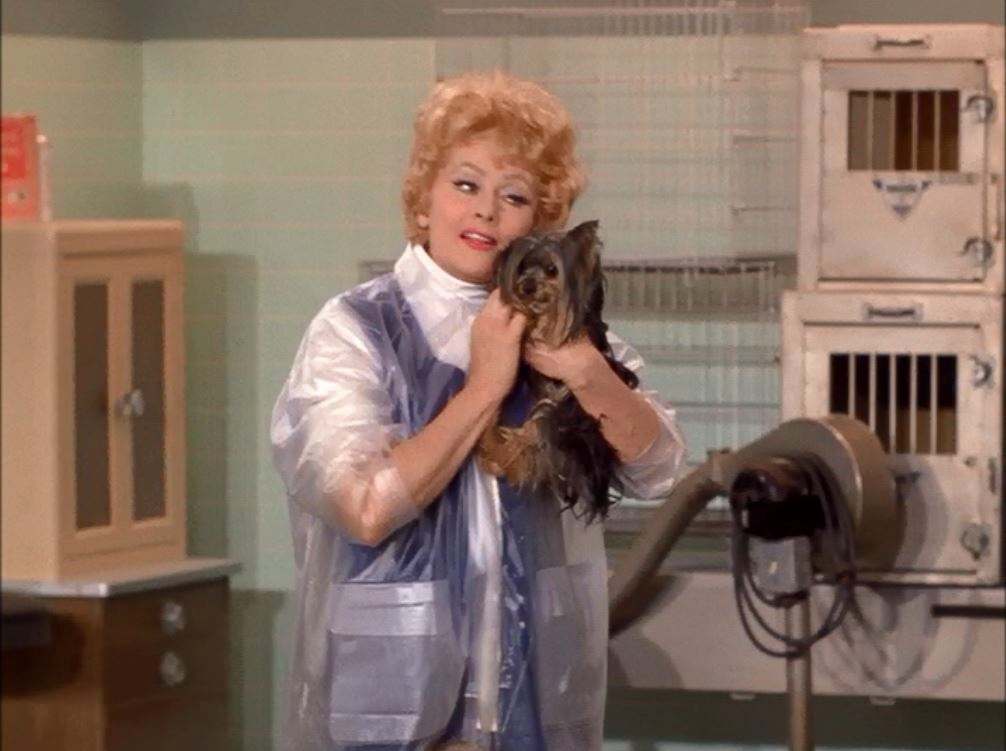
The webiste ‘Everything Lucy’ points to “The Bow-Wow Boutique” (1973) as when Lucille Ball started to rely almost exclusively on cue cards. Ball said that one of the hardest things to do was to erase the previous week’s script from her mind to make way for a new one. After all, she was walking around the same set every week, having dialogue with the same people.

Filming a promotional spot with Bobe Hope, Ball squints at distant cue cards and quips,
“Well, let’s use the bigger ones. I can see the little ones, but why the hell not use the bigger ones?”
CHEAT SHEETS, SCRIPTS & CUES

Sometimes, a script – or a few pages of script – made it onto the set. A close-up of the Swiss cheese sandwich in “First Stop” (1955) shows a couple of pages of script on the table. A few lines have even been crossed out!

In “Lucy in the Music World” (1965) the verbose but funny album names were taped to the back of the record sleeves!
- “He Wears a Hubcap for a Halo” (about a teenage girl whose boyfriend got run over by a police car)
- “I’ve Got Tears in My Ears from Lying on My Back in My Bed While I’m Crying Over You”
- “I Lost You to the Arms of Another” (about a girl whose boyfriend goes skin diving and gets tangled up with an octopus
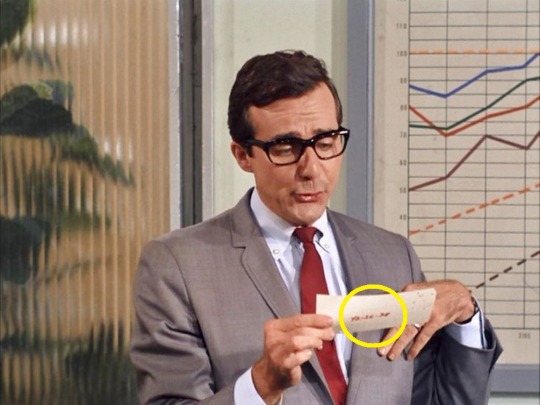
In “Lucy, the Matchmaker” (1968) Mr. Morton (Dick Patterson) reads Harry’s computer dating punch card. His match’s number is written on the card in red marker and the ink has bled through to the other side! Perhaps Patterson had trouble memorizing the number correctly?
PROTESTING CUE CARDS

Sometimes the materials that were used to create the cue cards were also used for other purposes. They were the perfect size for protest signs when “Lucy Goes on Strike” (1969).
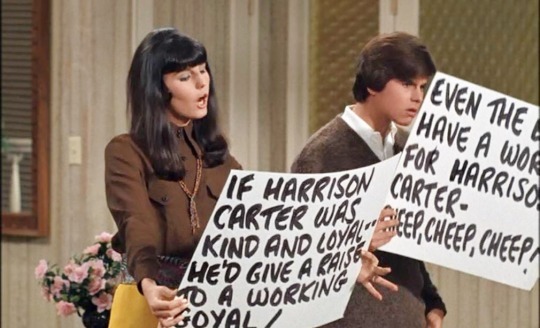
The distinctive handwriting in bold black ink was a hallmark of cue card writers.
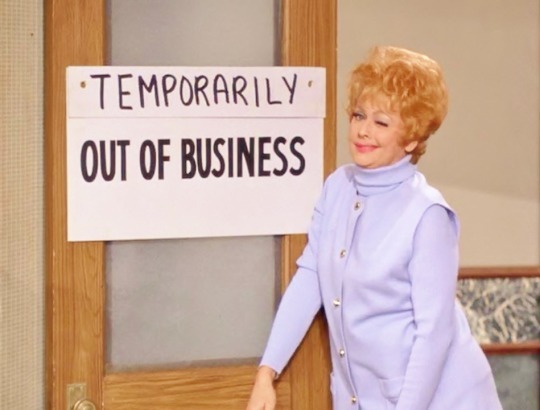
At the end of season five of “Here’s Lucy” in 1973, Ball had decided to end the series. She filmed an ending to the final episode where she hangs an “Out of Business” sign on the door of the Unique Employment Agency. But at the last moment, CBS convinced her to do a sixth season, so the ending moment was re-filmed with Lucy tacking a sign reading “Temporarily” above the “Out of Business” sign. The addional sign was obviously made from the same cardboard used for the cue cards – and by the same hand.

By the season six finale of “Here’s Lucy,” “Lucy Fights The System” in 1974, it was obvious that Ball was nearly completely dependent on the cue cards. Luckily, the storyline was basically carried by Lucie Arnaz, and Lucy’s scenes were mainly sitting at her desk.

During her final series, “Life With Lucy” (1986), it was well known that Lucille Ball read her lines from cue cards. She was 75 years old and in failing health, so it is an understandable accommodation.
Leave a comment